Papers by Manuel R Palacios-Fest
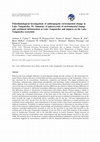
Journal of Paleolimnology, 2005
Paleorecords from multiple indicators of environmental change provide evidence for the interactio... more Paleorecords from multiple indicators of environmental change provide evidence for the interactions between climate, human alteration of watersheds and lake ecosystem processes at Lake Tanganyika, Africa, a lake renowned for its extraordinary biodiversity, endemism and fisheries. This paper synthesizes geochronology, sedimentology, paleoecology, geochemistry and hydrology studies comparing the history of deltaic deposits from watersheds of various sizes and deforestation disturbance levels along the eastern coast of the lake in Tanzania and Burundi. Intersite differences are related to climate change, differences in the histories of forested vs. deforested watersheds, differences related to regional patterns of deforestation, and differences related to interactions of deforestation and climate effects. Climate change is linked to variations in sediment accumulation rates, charcoal accumulation, lake level and water chemistry, especially during the arid-humid fluctuations of the latter part of the Little Ice Age. Differences between forested and deforested watersheds are manifested by major increases in sediment accumulation rates in the latter (outside the range of climatically driven variability and for the last $40 years unprecedented in comparison with other records from the lake in the late Holocene), differences in eroded sediment and watershed stream composition, and compositional or diversity trends in lake faunal communities related to sediment inundation. Variability in regional patterns of deforestation is illustrated by the timing of transitions from numerous sedimentologic, paleoecologic and geochemical indicators. These data suggest that extensive watershed deforestation occurred as early as the late-18th to the early-19th centuries in the northern part of the Lake Tanganyika catchment, in the late-19th to early-20th centuries in the northern parts of modern-day Tanzania, and in the mid-20th century in central Tanzania. Rapid increases in sediment and charcoal accumulation rates, palynological and lake faunal changes occurred in the early-1960s. We interpret this to be the result of greatly enhanced flushing of sediments in previously deforested watersheds triggered by extraordinary rainfall in 1961/62. Regional differences in deforestation histories
Journal of Paleolimnology, 2000
We have obtained a detailed paleoenvironmental record in the Summer Lake Basin, Oregon (northwest... more We have obtained a detailed paleoenvironmental record in the Summer Lake Basin, Oregon (northwestern Great Basin, US) spanning from 250ka-5 ka. This record is derived from core and outcrop sites extending from a proximal deltaic setting to near the modern depocenter. Lithostratigraphic, paleontologic (ostracodes and pollen) and geochemical indicators all provide evidence for hydroclimate and climate change over the study
Preliminary Insights on the Ecological Consequences of Late Quaternary Environmental Changes on Mono Lake (California)
Geological Society of America Abstracts with Programs

Paleoecology of a ciénega at the Mockingbird Gap Site, Chupadera Draw, New Mexico
Quaternary Research, 2017
The Mockingbird Gap Clovis site is a surface archaeological site located along Chupadera Draw in ... more The Mockingbird Gap Clovis site is a surface archaeological site located along Chupadera Draw in central New Mexico. Coring of the draw during archaeological investigation of the Clovis assemblage on the adjacent uplands revealed evidence for a regionally rare continuous, stratified depositional record beginning immediately before the Younger Dryas chronozone (YDC). Thirty sediment samples from the draw adjacent to the archaeological site were analyzed for microinvertebrates (ostracodes and mollusks) and gyrogonites (calcareous algae) to reconstruct its environmental history. Wet-dry cycles marked the presence/absence of microfossils. Based upon microfossils, this investigation highlights environmental change marked by the evolution from wetter/cooler to warmer/drier conditions at the Mockingbird Gap site and its response to climate change and groundwater fluctuations during and after the YDC. Four biofacies are recognized: the pre-Ciénega setting is sterile. Holarctic species near ...
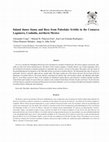
Boletín de la Sociedad Geológica Mexicana, 2014
For over a decade the Chihuahuan Desert has been considered as a hotspot of biodiversity. The div... more For over a decade the Chihuahuan Desert has been considered as a hotspot of biodiversity. The diverse aquatic ecosystems, especially, are (and were) rich in mollusk species. The dunes of the Comarca Lagunera, Coahuila, Mexico, are of major importance due to the well-preserved remains of animals and plants in a paleolake that covered a vast area in the region. This paper is the first report of the paleolimnological investigations of the Paleolake Irritila ecosystems in northern Mexico. We determined more than 28 species of gastropods, bivalves, ostracods, algae and one aquatic plant. The dunes contain one of the richest and most diverse fauna of the late Quaternary of northern Mexico. The fossils indicate a permanent but shallow lake with moderate salinity and alkalinity (pH) higher than 8.5, most likely around 10. Most of the mollusks are distributed outside Mexico and restricted to northern latitudes (northern United States and Canada). Several of them are endemic to the southern United States (Florida, Nevada, and Texas). For the first time in North America, using the local fauna and flora preserved in dune sediments, we try to reconstruct the paleoenvironmental conditions in northern Mexico during the late Quaternary.
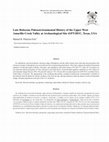
Boletín de la Sociedad Geológica Mexicana, 2010
In combination, microinvertebrates, calcareous algae (Charophyta), and the stable isotopes from o... more In combination, microinvertebrates, calcareous algae (Charophyta), and the stable isotopes from ostracodes and gyrogonites (the calcareous remains of charophytes) are a powerful tool for reconstructing paleoclimates. This study compares the paleoenvironmental signatures of land and aquatic mollusks, ostracodes, and charophytes with stable-isotope (δ 18 O and δ 13 C) values for Cypridopsis sp. (an ostracode) and the gyrogonites of Chara globularis and Nitella flexilis. Each individual signature contributes its own evidence of environmental change between 1890 ± 40 years B.P. and post-750 ± 40 years B.P. at archaeological site 41PT185/C in northern Texas, United States of America. The interpretation of the combined data permits a detailed reconstruction of paleoclimatic variability at the transition from the Medieval Climatic Anomaly to the Little Ice Age, allowing inferences about the impact of such environmental change on human populations in this part of the U.S. Southwest.
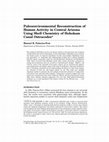
Geoarchaeology, 1997
The prehistoric Hohokam are the only known culture to develop large-scale irrigation systems befo... more The prehistoric Hohokam are the only known culture to develop large-scale irrigation systems before the arrival of Europeans to the United States. Hohokam social evolution was based, in part, on intensive agriculture. To date, most models of Hohokam irrigation agriculture (i.e., hydrologic and sedimentologic models) fail to address dynamics like flow regime, seasonality, canal use and abandonment (Henderson and Hackbarth, 1939). Biota recovered from Hohokam canals often include ostracodes, carbonate-secreting microcrustaceans that are sensitive to hydrochemical changes. m (Mg/Ca) v and m (Sr/Ca) v ratios in the ostracode Limnocythere staplini can be converted into approximate temperature and salinity values at the time of calcification. Ostracode shell chemistry is becoming a powerful tool for understanding the history of canal water chemistry, intensity of land use, and human impact on soil. This study uses multiple regression models to generate the first paleoenvironmental estimates of temperature and salinity from ostracode shell chemistry. Temperature estimates suggest that most canals were used between late winter (February-March) and the premonsoonal season (May-June). Salinity estimates apparently vary over time. Both paleoenvironmental estimates are in good agreement with historic records for the Phoenix area.
Paleolimnological investigations of anthropogenic environmental change in
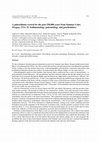
elements, oxygen and carbon isotopes We have obtained a detailed paleoenvironmental record in the... more elements, oxygen and carbon isotopes We have obtained a detailed paleoenvironmental record in the Summer Lake Basin, Oregon (northwestern Great Basin, US) spanning from 250 ka5 ka. This record is derived from core and outcrop sites extending from a proximal deltaic setting to near the modern depocenter. Lithostratigraphic, paleontologic (ostracodes and pollen) and geochemical indicators all provide evidence for hydroclimate and climate change over the study interval. Lithostratigraphic analysis of the Summer Lake deposits allows subdivision into a series of unconformity or paraconformity-bound lithosomes. The unconformity and facies histories indicate that the lake underwent several major lake-level excursions through the Middle and Late Pleistocene. High stands occurred between ~200 and ~165 ka, between ~89 and 50 ka and between ~25 and 13 ka. Uppermost Pleistocene and Holocene sediments have been removed by deflation of the basin, with the exception of a thin veneer of late Holoce...
Paleolimnological investigations of anthropogenic environmental change

Wetland geomorphology and paleoecology near Akab Muclil, Rio Bravo floodplain of the Belize coastal plain
Geomorphology
Abstract To understand wetland geomorphology and paleoecology, we collected a 2.6 m sediment core... more Abstract To understand wetland geomorphology and paleoecology, we collected a 2.6 m sediment core from a flooded swamp adjacent to the Maya archaeological site of Akab Muclil in the Maya Lowlands of northwestern Belize. The site of Akab Muclil has a known occupation that persisted from Early Maya Classic (1700–1350 BP) through the Terminal Maya Classic (1180–1050 BP) and into the Postclassic (1050–450 BP) and lies near a vast network of ancient Maya canal and field systems. We analyzed this core using a combination of paleoecological and geochemical techniques to determine the history of land use and natural change over time within this wetland. Accelerator Mass Spectrometry dating, pollen, charcoal analysis, micropaleontology, geochemical analysis, and magnetic susceptibility provide a suite of methods from which we interpret the geomorphic and ecological history of this wetland system. Four AMS dates from the length of the core provide us with an age model that runs from 1675 cal BP through the Maya Classic onward to the present. At the base of this system, soil composition and chemistry provide evidence that the system changed from a seasonally wet terrestrial soil to a perennially wet swamp, as the basal Mollisol soil lies buried by peats and calcareous sediments. This shift to a perennial wetland could be related to ancient Maya water management or a natural geomorphic change, though we suspect the former because of nearby ancient Maya large-scale geomorphic and hydrological manipulation in the form of intensive canalization and agriculture. Evidence of ancient Maya uses and impacts, including sedimentation, Zea mays pollen, and high charcoal counts occur from the lowest levels of the sequence through the Classic and into the Postclassic period. Above this level, the strata change to stable peats, laminated deposits of light gray/dark gray gypsum, authigenic carbonate, and layers of fibrist peat, with little evidence of human impact until recent increases in charcoal and phosphorous. This study, compared with other regional studies, indicates a later transition from terrestrial to wetland, later human impacts in the Postclassic, and a geomorphic impact record closely tied to the history of the adjacent site rather than broader land use trends.
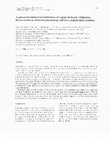
Journal of …, 2002
Palcoccolclgy of Laguna Babicora, Chihuahr-ra, Mcxico was rcconstructcd usirrg ostracodc f'aunal ... more Palcoccolclgy of Laguna Babicora, Chihuahr-ra, Mcxico was rcconstructcd usirrg ostracodc f'aunal asscmblagcs and shcll clrcnristry. Thc paleolimnological rccorcl is usccl to show thc nragnitudc of paleoclir.natic clrangcs in thc arca liorn 2-5,000 ycars ttl the present. Fatrnal assctrblagcs consist of fbur spccics of thc gcnr"rs Linttrot'.t'lltat'a'. L. suppuart.si.s. L. cat'iottrltant,su. L. brudbur.t'i and L. plutfbrmu, all paleosalinity index developed from thesc asscmblagcs inclicatcs that the lake's salinity flr-rctuatccl ti'eclucntly fi'onr oligo-to rncso-halirre conditions dLrring the last -25,000 ycars. This pattem ancl low salinity rangc arc in goocl agreclrent with modern TDS (here used as an indicator of salinity) values recorded frorr 26 wclls and onc spling fiorrr thc area (258-97 5 mg I r). To estimate palcotcrrrpcratLlre we exar.rrined the trace element contcnt (Mg/Ca ratios) tronr individual valves of L. t'eriotubcnt.su and L. plut.tlitrntu, the two species rnost colnlnonly rccorcled in LagLrna Babicora. Shell Mg/Ca ratios of 204 specimens of thesc two spccies were used to estirnate water telrperatLrre (Mg/Ca) by mcans of experimental standard coefficients. Or,rr data show that paleowater tempefature ranged fiom 5.6 2 | .3 oC (with 2o values ranging fron.t 024.8 "C), which sLlggest a close correlation with atmospheric temperatures arour.rd the lake. These results are in good agrccmcut with a nroclcr'n nrcan wintcrtclllperatllre (3.5 'C) and r.nean sulnuler teurperature (20'C) recorded in thc arca bctwccn 1 970 and 1 980. l tt5 I ntroduction Quaternary deposits of nofth-central Mexico are poorly runderstood, but are significant to our understanding of past clir.r.ratic change ar.rd the paleoenvironmental history of the Chihuahuan Desert and adjaccnt Madrean Evergreen Woodland , where tlre Babicora Basin is located.
Environmental History of an Early Agricultural Period Irrigation Canals Network at Las Capas (Site AZ AA:12:753 [ASM]), Tucson, Arizona
Late Holocene Rapid Hydroclimatic Change at Cienega Amarilla, West-Central New Mexico, Usa
Geological Society of America Abstracts with Programs, 2016
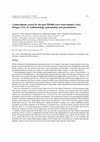
Journal of …, 2000
We have obtained a detailed paleoenvironmental record in the Summer Lake Basin, Oregon (northwest... more We have obtained a detailed paleoenvironmental record in the Summer Lake Basin, Oregon (northwestern Great Basin, US) spanning from 250 ka-5 ka. This record is derived from core and outcrop sites extending from a proximal deltaic setting to near the modern depocenter. Lithostratigraphic, paleontologic (ostracodes and pollen) and geochemical indicators all provide evidence for hydroclimate and climate change over the study interval. Lithostratigraphic analysis of the Summer Lake deposits allows subdivision into a series of unconformity-or paraconformity-bound lithosomes. The unconformity and facies histories indicate that the lake underwent several major lake-level excursions through the Middle and Late Pleistocene. High stands occurred between ~200 and ~165 ka, between ~89 and 50 ka and between ~25 and 13 ka. Uppermost Pleistocene and Holocene sediments have been removed by deflation of the basin, with the exception of a thin veneer of late Holocene sediment. These high stands correspond closely with Marine Oxygen Isotope Stages 6, 4 and 2, within the margin of error associated with the Summer Lake age model. A major unconformity from ~158 ka until ~102 ka (duration varies between sites) interrupts the record at both core and outcrop sites. Lake level fluctuations, in turn are closely linked with TOC and salinity fluctuations, such that periods of lake high stands correlate with periods of relatively low productivity, fresher water and increased water inflow/ evaporation ratios. Paleotemperature estimates based on palynology and geochemistry (Mg/Ca ratios in ostracodes) indicate an overall decrease in temperature from ~236 ka-165 ka, with a brief interlude of warming and drying immediately after this (prior to the major unconformity). This temperature decrease was superimposed on higher frequency variations in temperature that are not evident in the sediments deposited during the past 100 ka. Indicators disagree about temperatures immediately following the unconformity (~102-95 ka), but most suggest warmer temperatures between ~100-89 ka, followed by a rapid and dramatic cooling event. Cooler conditions persisted throughout most of the remainder of the Pleistocene at Summer Lake, with the possible exception of brief warm intervals about 27-23 ka. Paleotemperature estimates for the proximal deltaic site are more erratic than for more distal sites, indicative of short term air temperature excursions that are buffered in deeper water. Estimates of paleotemperature from Mg/Ca ratios are generally in good agreement with evidence from upland palynology. However, there is a significant discordance between the upland pollen record and lake indicators with respect to paleoprecipitation for some parts of the record. Several possibilities may explain this discordance. We favor a direct link between lake level and salinity fluctuations and climate change, but we also recognize the possibility that some of these hydroclimate changes in the Summer Lake record may have resulted from episodic drainage captures of the Chewaucan River between the Summer Lake and Lake Abert basins.
Late Quaternary Ostracod Stratigraphy and Paleoecology from Mono Lake, California
Journal of Paleolimnology, 2005
Emma S. Msaky1, Daniel Livingstone2 and Owen K. Davis3,* 1Tanzania Petroleum Development Corporat... more Emma S. Msaky1, Daniel Livingstone2 and Owen K. Davis3,* 1Tanzania Petroleum Development Corporation, Dar es Salaam, Tanzania; 2Department of Biology, Duke University, Durham, NC 27708, USA; 3Department of Geosciences, University of Arizona, Tucson, AZ 85721, ...

A Paleo-Lake and wetland paleoecology associated with human use of the distal Old River Bed Delta at the Pleistocene-Holocene transition in the Bonneville Basin, Utah, USA
Quaternary Research
Mollusk and ostracode assemblages from the distal Old River Bed delta (ORBD) contribute to our un... more Mollusk and ostracode assemblages from the distal Old River Bed delta (ORBD) contribute to our understanding of the Lake Bonneville basin Pleistocene-Holocene transition (PHT) wetland and human presence on the ORBD (ca. 13,000–7500 cal yr BP). Located on U.S. Air Force-managed lands of the Great Salt Lake Desert (GSLD) in western Utah, USA, the area provided 30 samples from 12 localities. The biological assemblages and the potential water sources using 87Sr/86Sr analyses showed wetland expansion and contraction across the PHT, including the Younger-Dryas Chronozone (YDC). The record reflects cold, freshwater conditions, which is uncharacteristic of the Great Salt Lake Desert, after recession of Lake Bonneville. Lymnaea stagnalis jugularis, Cytherissa lacustris, and possibly Candona sp. cf. C. adunca, an endemic and extinct species only reported from Lake Bonneville, suggest cold-water environments. Between 13,000–12,400 cal yr BP, a shallow lake formed, referred to as the Old River ...
New Insights on Late Pleistocene-Holocene Environmental Change at Mono Lake (Ca) Through Ostracode Paleoecology
A Great Basin lake-level response to 38–34 ka Dansgaard–Oeschger oscillations
Journal of Paleolimnology
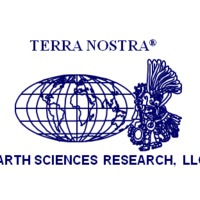
Uploads
Papers by Manuel R Palacios-Fest